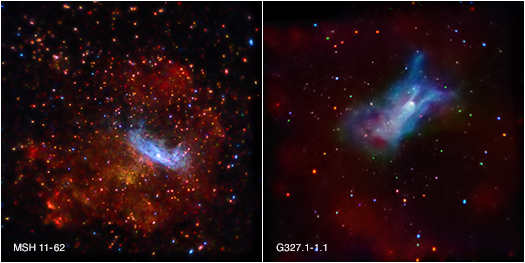Supernova Shock Waves, Neutron Stars, and Lobsters
A supernova that signals the death of a massive star sends titanic shock waves rumbling through interstellar space. An ultra-dense neutron star is usually left behind, which is far from dead, as it spews out a blizzard of high-energy particles. Two new images from NASA's Chandra X-ray Observatory provide fascinating views - including an enigmatic lobster-like feature - of the complex aftermath of a supernova.
When a massive star runs out of fuel resulting in a supernova explosion, the central regions usually collapse to form a neutron star. The energy generated by the formation of the neutron star triggers a supernova. As the outward-moving shock wave sweeps up interstellar gas, a reverse shock wave is driven inward, heating the stellar ejecta.
Meanwhile, the rapid rotation and intense magnetic field of the neutron star, a.k.a. a pulsar, combine to generate a powerful wind of high-energy particles. This so-called pulsar wind nebula can glow brightly in X-rays and radio waves.
More information at http://chandra.harvard.edu/photo/2014/msh11g327/index.html
-Megan Watzke, CXC
- Log in to post comments

